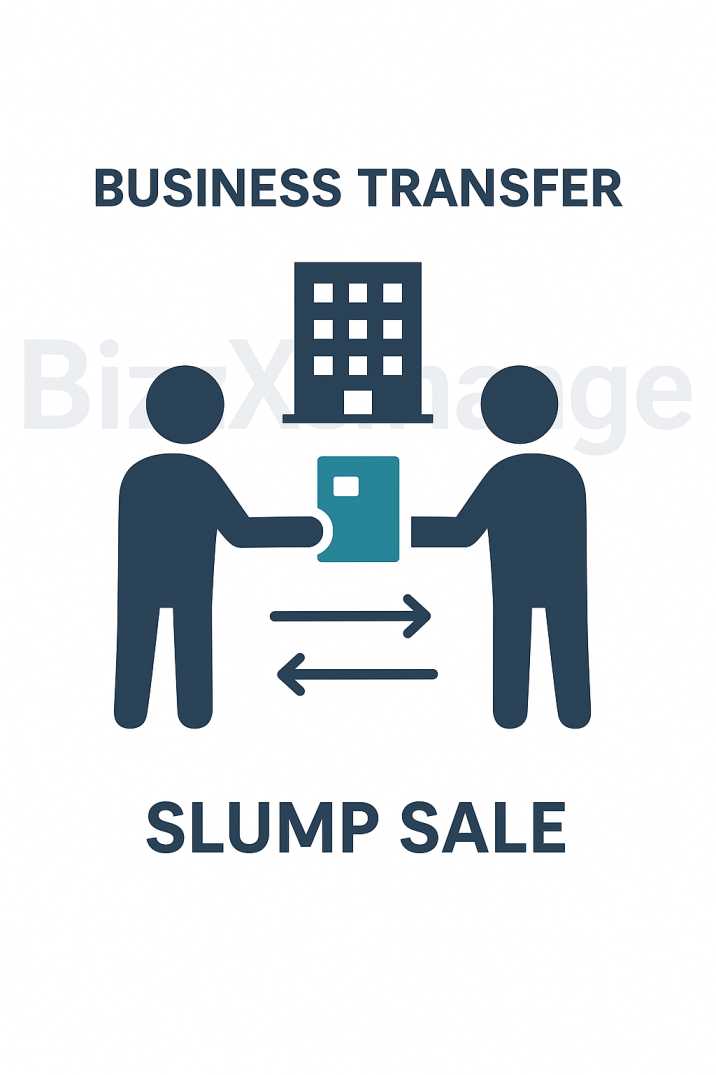1st Oct, 2025| 5 Min read.

How capital gain shall be calculated in case of slump sale of business as a whole?
Slup sale of business in lumpsum
In case of a slump sale of business (i.e sale with full
assets and liabilities), capital gains are calculated under a special
mechanism given in Section 50B of the Income Tax Act, 1961.
1. What is a Slump Sale?
- Defined
in Section 2(42C):
"Slump sale means transfer of one or more undertakings
as a result of the sale for a lump sum consideration without values being
assigned to individual assets and liabilities."
👉 Key features:
- Entire
undertaking is transferred (business on going-concern basis).
- Sale
consideration is lump-sum.
- No
separate valuation is attached to assets/liabilities in the agreement.
- Transfer
may be of entire business or one of the units/divisions.
2. Tax Treatment
- Section
50B is the special provision for computation of capital gains in slump
sale.
- The
"undertaking" itself is treated as a capital asset.
- Type
of gain depends on period of holding of undertaking (not of individual
assets):
- Held
> 36 months → Long Term Capital Gain (LTCG)
- Held
≤ 36 months → Short Term Capital Gain (STCG)
⚠️ Note: Even if individual
assets include stock-in-trade or short-term assets, period of holding of
undertaking decides tax treatment.
BizzXchange helps in slump sale tax treatment
3. Computation of Capital Gain (Sec 50B)
Formula: Capital Gain = Full Value of Consideration – Net
Worth of Undertaking
(a) Full Value of Consideration
- Lump
sum sale price as per agreement.
- From
A.Y. 2021-22 onwards → As per Sec 50B(2A), if sale consideration is
less than Fair Market Value (FMV) of undertaking (calculated as per
Rule 11UAE), then FMV is deemed consideration.
(b) Net Worth (Explanation 1 to Sec 50B)
Net Worth = Aggregate Value of Assets – Liabilities
- Assets
Valuation
- Depreciable
assets → Written Down Value (WDV) as per Income Tax Act (Sec
43(6)(c)).
- Non-depreciable
assets (like land) → Book Value as per balance sheet.
- Other
assets (like current assets, investments) → Book Value.
- Revaluation
→ ignored (not included).
- Liabilities
- Taken
as per books of account (book value).
(c) Special Points
- No
indexation benefit available for Net Worth.
- Net
worth once calculated is deemed cost of acquisition & improvement
(Explanation 2 to Sec 50B).
- Slump
sale loss (if consideration < net worth) → Allowed to set-off as
per normal capital gain rules.
4. Example
Suppose XYZ Ltd sells one of its divisions as slump sale:
- Lump
sum consideration = ₹15 crore
- Assets
& Liabilities in Books:
- Depreciable
Assets (WDV) = ₹6 crore
- Land
(Book Value) = ₹2 crore
- Current
Assets = ₹4 crore
- Liabilities
= ₹3 crore
👉 Net Worth = (6 + 2 + 4)
– 3 = ₹9 crore
Capital Gain = 15 – 9 = ₹6 crore
If held for > 36 months → LTCG.
If ≤ 36 months → STCG.
5. Important Points
- No
indexation benefit is available for slump sale.
- Form 3CEA
(CA certificate) is required to certify computation of Net Worth.
- If
slump exchange (consideration not in money but shares, etc.) → Not covered
under 50B, other provisions may apply.